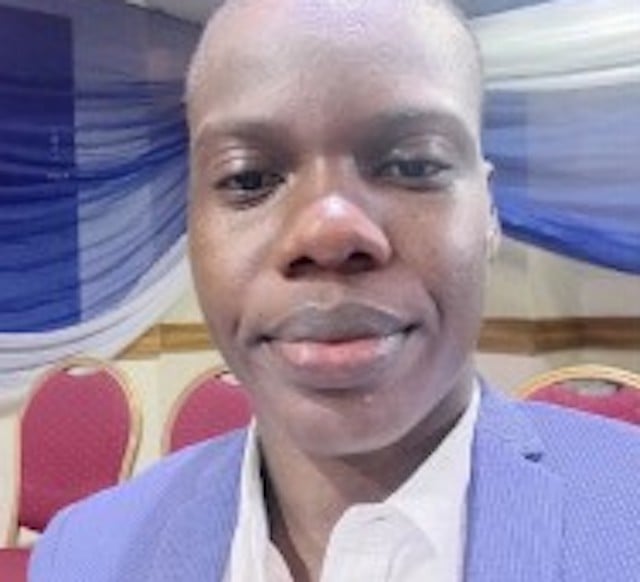News
How I lived 25 years as female before discovering I’m man — Tosin Odunlami

Tosin Odunlami, a Nigerian-born intersex advocate, has shared his remarkable story of self-discovery, transition, and activism aimed at promoting intersex visibility and inclusion in Nigeria.
In a recent interview with The Podcast Network, Odunlami reflected on his early years, his experience living 25 years as a female, and the personal and social challenges that came with being misunderstood in a conservative society.
Intersex people are born with physical or biological traits — such as chromosomes, hormones, or reproductive organs — that do not fit typical male or female categories.
A 2000 study by Dr. Anne Fausto-Sterling of Brown University estimates that about 1.7% of the global population is intersex, while a later 2002 study by Dr. Leonard Sax places the figure closer to 0.018%, depending on classification criteria. Despite differing statistics, both researchers, along with the United Nations and the World Health Organisation, affirm that intersex variations are a natural part of human diversity.
Clarifying common misconceptions, Odunlami said, “Intersex persons are not transgender. Neither are they gay or lesbian. Intersex means being born with biological variations; it could be internal, chromosomal, or genital.”
He added, “It’s a privilege for me to speak about my experience. I discovered that I’m an intersex person at age 25. Basically, I lived all my life for 25 years as a female, and it wasn’t easy.”
When asked about fertility, he confirmed, “Yes, because I’ve done some examinations.”
Odunlami, who grew up in Nigeria, recalled the pressure to conform to the gender assigned at birth. “You have to behave in the female way. And if you’re not doing all of that, the society and the community start looking at you in a certain way.”
Odunlami said he remembered how puberty brought confusing physical changes: “I started seeing some changes in my body, and I was scared. I couldn’t talk to anyone because when you tell them this is what you’re seeing in your body, they decide to discriminate or tell you you’re taboo.”
He said when his mother discovered his condition, she sought medical help, but the doctors were uncertain. “The doctor did not even know who I am. They tried to confirm me to their ascribed gender and said they had to do surgery to cut off what they were seeing,” he said.
Rejecting the surgical procedure, his mother turned to religion for answers. “My mom took me to several churches; they gave me soaps and prayers, just to make me grow breasts,” Odunlami recalled.
During university, he continued to live as a woman but tried to blend in. “I lived with two females in the same room, and when we were dressing up, I shifted myself to the corner. I wore padded bras because I wanted to fit in,” he said.
Odunlami’s transition began after doctors confirmed that his hormone levels were predominantly male. “The doctor said my hormones are more male hormones. That was when I told the doctor, ‘Okay, I think I’m going to come to the male gender.’”
Reactions to his transition were mixed. “Some were surprised, some were supportive, and some are still anxious about it. But I’m always open to share with them,” he said.
He also clarified his sexual orientation: “I’m attracted to women, emotionally, mentally, and physically.”
Odunlami described how he came out to his church. “On a Sunday, he said I should come out, and you know, it’s also a form of advocacy — educating people, mothers, adults, youths on all of this.”
He continued, “Although it was a shock to them, they were like, ‘No, Sister Esther?’ Because then I was ascribed a female gender, so my first name is Esther. They were saying, ‘What? Sister Esther? Are you a trans? Are you gay?’ They didn’t really understand the whole situation, even after I shared with them that this is me, I’m an intersex person.”
While some church members initially distanced themselves, acceptance eventually followed. “Some were like, ‘Don’t near my female daughter,’ and I was a children’s teacher, so I had to step back to see how they received the information. But later they were all open arms, they received me back, and I started teaching again.
On intersex identity within the LGBTQIA+ spectrum, Odunlami explained, “The ‘I’ in the LGBTQIA, that’s intersex. We can stand alone, and as well we cannot stand alone. We are part of the community because we work together in different ways, for programming, advocacy, and education.”
He added that there is a growing intersex community in Nigeria. “We have intersex persons in different states across Nigeria. We hold monthly check-ins and community meetings. On October 26, we’ll celebrate Intersex Awareness Day, a day to celebrate our growth, resilience, and visibility.”
Odunlami also spoke about collaborations with international allies. “The Executive Director of Intersex Nigeria, Obioma, is part of the Intersex Alliance Movement globally, working to advance advocacy and programming. We also receive funding and support from international organisations for our work here in Nigeria.”
Reflecting on his faith and acceptance, he said, “I had this peace, that I am living my full self.”
Now a vocal advocate for intersex inclusion, Odunlami continues to use his platform to educate and inspire. “It’s not a disability,” he emphasized. “I’m a normal person like every other person.”























